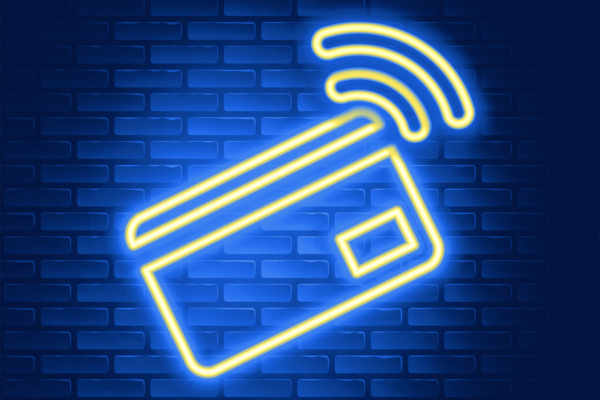
Bank Better: How to Switch Banks

Folks switch banks for all kinds of reasons. Maybe you moved to a new area, or you’re tired of paying overdraft and ATM fees. You could also just be looking for better customer service or a more personal experience. No matter the why, there are several steps you can take for a smooth transition.
1. Choose a New Bank or Credit Union
Before you change where you choose to store and manage your money, it’s important to ask yourself: what do you want? From traditional banks to credit unions to neo banks, there are certain features that can help you decide which is best for you.
What do you need from a bank, and which features can help you? Consider these possible capabilities and tools as you evaluate a potential financial institution:
- Fee-free banking
- Automatic bill pay
- Mobile app and online banking
- Mobile check deposit
- Branch and ATM locations
- Savings account interest rates
- Debit card
- Credit card
- Excellent security
Keep in mind, some institutions may require a minimum opening deposit or minimum balance requirements.
Fee-Free Banking is Here
Looking for a financial institution that doesn’t nickel and dime you? If you live or work in Texas, join Amplify!
2. Make a List of Direct Deposits and Debits
This is perhaps the most crucial step in how to switch banks. Once you’ve decided where you’d like to bank in the future, it’s now time to make a list of all the transactions that impact your daily life. You don’t want your paycheck to continue depositing to your old account, while automatic payments are withdrawn from your new account, or vice versa!
To get started, make a list of the following:
- Automatic deposits: This includes your paychecks that may be on direct deposit, any government benefit payments like Social Security or disability, alimony, or child support.
- Outstanding checks: Review your checkbook for any checks you’ve written in recent weeks or months.
- Automatic payments: Such payments could include your monthly mortgage, utility payments, automatic credit card payments or student loans.
- Subscription payments: These include streaming services, food or delivery services, gyms, or any other accounts you pay for monthly or annually.
- Recurring transfers: You should also make a list of transfers you may make to retirement accounts, investment accounts and any other savings accounts.
3. Open Your New Bank Account
Now that you know where you’d like to bank and what your current account’s cashflow looks like, you’re ready to open your new account. Most banks and credit unions allow you to open an account online, which is perhaps the most convenient option. If you prefer a more personal touch, you can also open an account by phone or by heading into a local branch.
No matter the method you choose to open your new account, there are a few pieces of documentation you’ll need:
- A photo ID (a driver’s license or passport)
- Proof of residence (such as a utility bill)
- Social Security number or Individual Taxpayer Identification Number (ITIN)
- A minimum deposit (depending on the financial institution)
4. Update Your Automatic Deposits and Debits
This part of switching banks is the most tedious, although some banks and credit unions have tools that allow you to automatically update your direct deposits to be rerouted to your new account. If the new financial institution you’ve chosen doesn’t offer a service like this, you’ll need to delete your old bank account information and replace it with your new bank account information for each type of deposit you listed in Step 2.
Let’s revisit the list you made during Step 2 and make some changes!
- Automatic deposits: It may take a few weeks for changes to your direct deposit information to be updated with your employer or the government, so be sure to keep your old account open until these deposits begin to appear in your new account.
- Outstanding checks: Be sure to review both your checkbook and your current bank account to ensure that any outstanding checks have been deposited before you move all your money to your new bank account.
- Automatic payments: Make sure to update your bank account information with your creditors so that you don’t fall behind on payments when you switch financial institutions.
- Subscription payments: Update your payment information to your new account with any subscription services you pay for monthly or annually.
- Recurring transfers: Update your bank information with these transfer accounts to ensure that you’re able to continue saving for your future—and that you don’t overdraft on your old account by mistake.
5. Close Your Old Bank Account
Once you’re satisfied that all your direct deposits and automatic debits have been transferred to your new account, it’s time to close your old account. Just like when you opened your new bank account, you’ll usually have the option to do this online, by phone, or in-person at a local bank branch.
However you choose to close your old account, ask for written verification that it has been closed—you may need this in case your old bank account allows any transactions that result in fees once your account is closed.
As a final step, destroy any debit cards, credit cards or checks associated with your old account. Keep your bank statements for your records in case that you need them to complete your taxes. You should also review that last bank statement in detail, to double check that you haven’t missed any lingering deposits, debits, or transfers.
Consider Your Local Credit Union
When deciding which financial institution should be your home, credit unions are a strong choice for those seeking personalized customer service, fee-free banking, and more advantageous rates on savings accounts and loans.
Amplify Credit Union provides Fee-Free Banking for all of our members, makes it easy to switch banks, and also offers award-winning lending. The team at Amplify also offers lives and works in the communities it serves—we’re (literally) here for you! We’re on a mission to remove the obstacles standing between our members and their financial success.
Become an Amplify Member
Every Amplify account holder enjoys fee-free banking. That means no overdraft, maintenance, or other banking fees cutting into your pocket.




